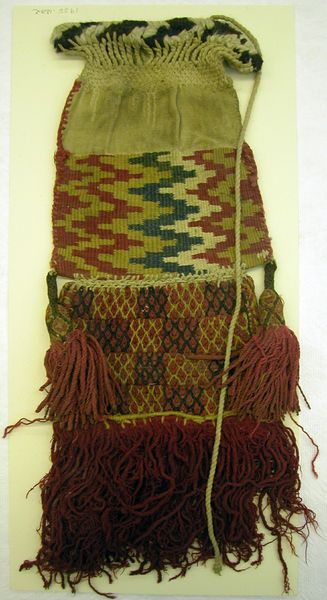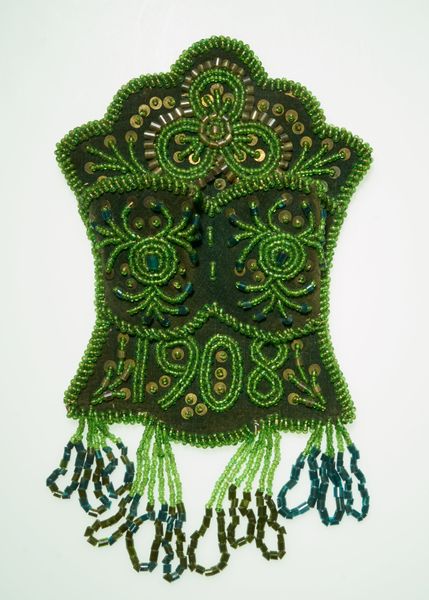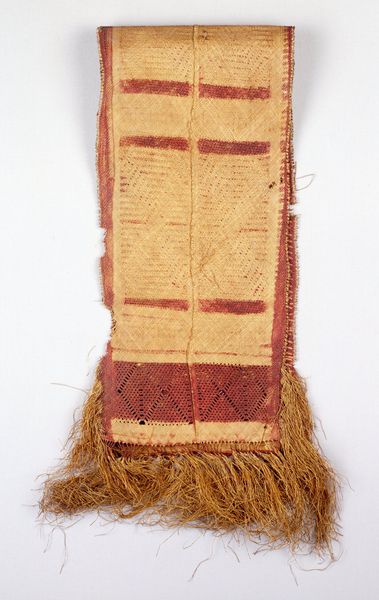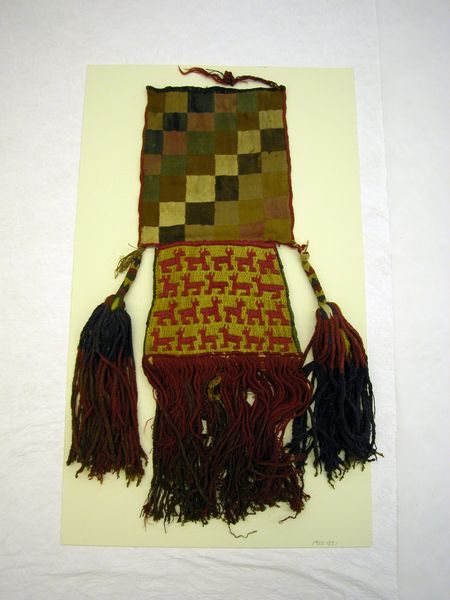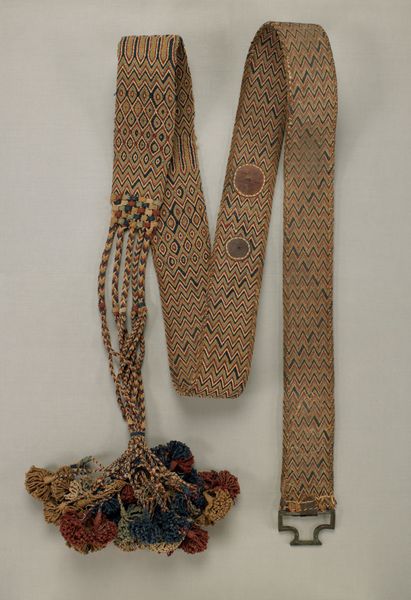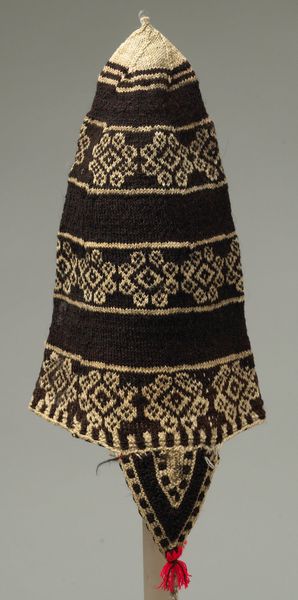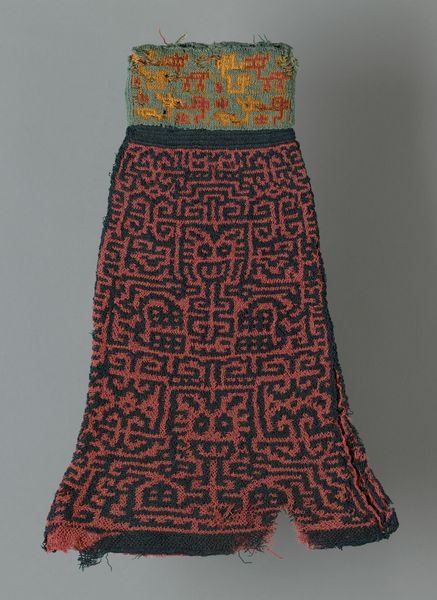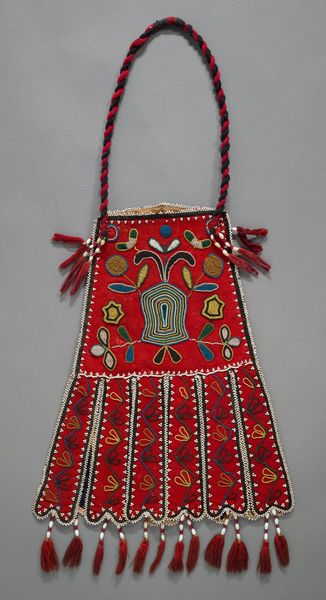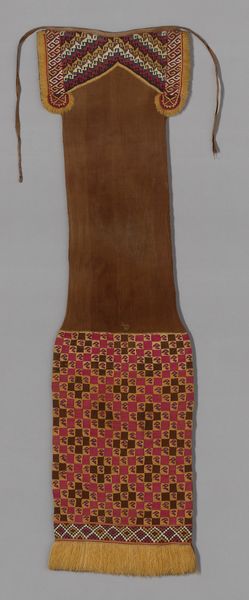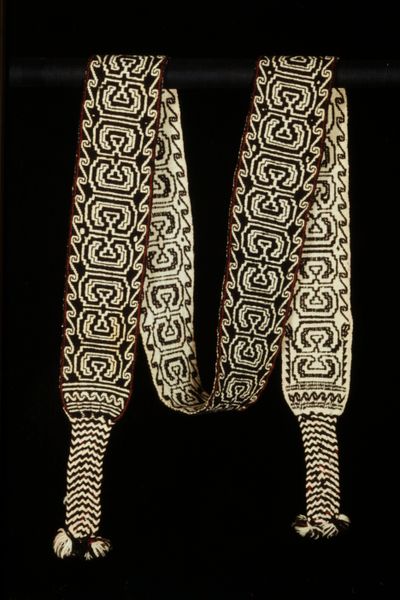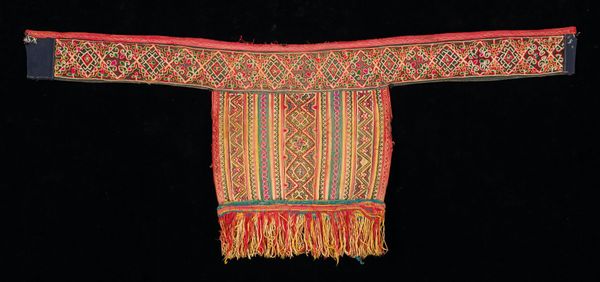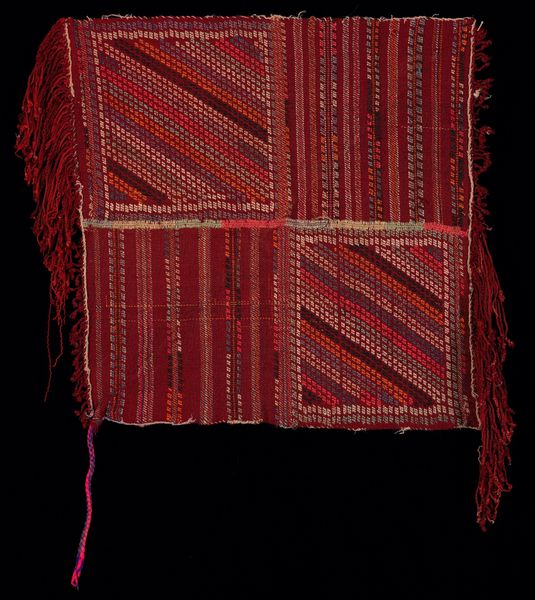
fibre-art, weaving, textile
#
fibre-art
#
weaving
#
textile
#
mixed media
#
indigenous-americas
Dimensions: 44.5 × 16.5 cm (17 1/2 × 6 1/2 in.)
Copyright: Public Domain
Editor: This is a Coca Bag, possibly made between 1476 and 1532 by the Inca people. It's a woven textile bag and appears to incorporate fibre art techniques. The texture is really striking! What does this piece communicate to you? Curator: As a materialist, I’m immediately drawn to the production of this object, to its social and economic dimensions. Who had the knowledge to create something so intricate? The labour involved in collecting, processing, and weaving these materials— likely camelid fibre, perhaps cotton, potentially dye plants. Think about how trade networks made such skilled work and specific raw material available. Editor: That’s fascinating. So, you’re thinking about the bag not just as a beautiful object, but also as a product of a whole social and economic system. Curator: Exactly. It moves beyond just admiring patterns; the textile's existence challenges distinctions between "art" and "craft." What was the labor division required for the process of textile creation within Inca society at this time? And how was it regarded? Considering it was a Coca bag adds another layer; coca leaves held immense cultural significance. This object wasn't purely decorative, so we are seeing labor employed in producing what we may deem utilitarian in purpose. Editor: The level of detail is amazing and now I know that the means of production also holds meaning. The question about what materials are utilized is also something that never crossed my mind. Thank you! Curator: Considering such artifacts gives insight into power structures and cultural exchange.
Comments
No comments
Be the first to comment and join the conversation on the ultimate creative platform.
